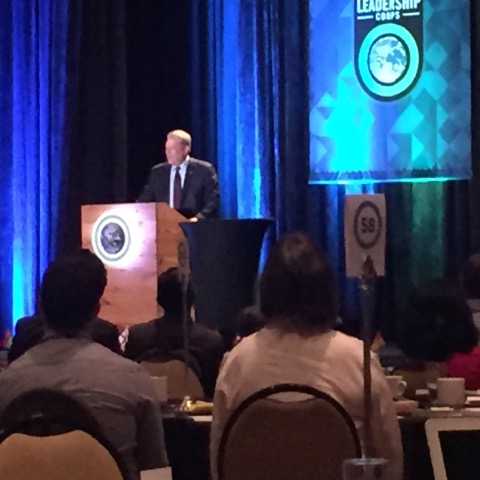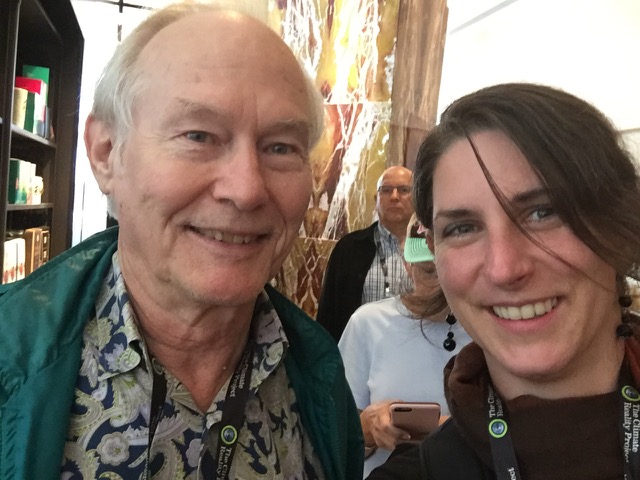By Stephanie Thomas
On August 1 6th through 18th, the Climate Reality Project came to Texas, training hundreds of people from all over the United States and the world to be advocates on behalf of the climate and to empower others with knowledge to create a culture of awareness and action. As Vice-President Al Gore opened the three day training he told us that passion is central to how we will deal with this crisis.
6th through 18th, the Climate Reality Project came to Texas, training hundreds of people from all over the United States and the world to be advocates on behalf of the climate and to empower others with knowledge to create a culture of awareness and action. As Vice-President Al Gore opened the three day training he told us that passion is central to how we will deal with this crisis.
Mr. Gore shared with us his presentation on climate change that has continually evolved over the years, updated for relevance. His presentation contained many salient facts, like the fact that CO2 is being released faster now than any time known in the history of the Earth and that the energy trapped by anthropogenic carbon pollution is equivalent to 400,000 exploding Hiroshima atomic bombs per day per year. Some of what he shared was heavy, including footage of the recent floods in Louisiana and the wildfires in Canada and California. We learned about “rain bombs,” the phenomenon that dumped 240 billion gallons of rain in Harris County this April. Food, water, global health, and infrastructure are all systems vulnerable to climate change, and Mr. Gore shared with us this quote from the US Department of Defense: “Climate change 'will likely lead to food and water shortages, pandemic disease, disputes over refugees and resources, and destruction by natural disasters in regions across the globe.'” Yet while the message he shared was somber, he also spoke of hope. The capacity for wind and solar energy continue to climb, and the Age of Renewables is emerging. Mr. Gore posed three questions: do we have to change, can we change, and will we change? He demonstrated that the answers to all of these questions is a resounding yes. We are already changing.
Throughout the training local and national leaders took the stage to share their insights and expertise. The idea of environmental justice took the forefront as Dr. Robert Bullard of Texas Southern University told us that “whe n we talk about climate change, it's more than parts-per-million, it's about justice.” The impacts of pollution are being felt more by people of color: African Americans are 52% more likely to live in urban heat islands, African Americans & Latin@s are more likely to live in nonattainment areas and areas that are more polluted. He proposed developing a targeted U.S. southern initiative on climate justice because of the south's particular vulnerability to climate change. And with Houston being the home of a world-class medical center, we should take the lead in addressing health disparities and diseases due to climate change.
n we talk about climate change, it's more than parts-per-million, it's about justice.” The impacts of pollution are being felt more by people of color: African Americans are 52% more likely to live in urban heat islands, African Americans & Latin@s are more likely to live in nonattainment areas and areas that are more polluted. He proposed developing a targeted U.S. southern initiative on climate justice because of the south's particular vulnerability to climate change. And with Houston being the home of a world-class medical center, we should take the lead in addressing health disparities and diseases due to climate change.
The current energy revolution has been held back through some major deception. We learned how the tobacco industry turned toward oil industry for advice on creating doubt around the health impacts of tobacco smoke. Carroll Muffett of the Center for International Environmental Law told us about how the oil industry created a "Smoke and Fumes" committee in the 1940s to create doubt regarding first air quality, then carbon pollution and climate change in the 1980s and beyond.The oil industry continues its climate deception today through the American Legislative Exchange Council (ALEC) and through continued funding of climate uncertainty.
Yet despite being a stronghold of the oil and gas industry, Texas has been a leader in many ways. Congressional candidate James Cargas shared with us the strides that the City of Houston has made by using renewables to power 80% of the city government's load. The economics around renewables are improving: they are cheaper and cleaner. During the training, I touched the future through a smooth and quiet test drive of a hydrogen fuel cell-powered car. Hilton Kelly from Port Arthur reminded us during an environmental justice panel that we are making progress—there is hope!
Photos:
Sierrans Jim Williams and Stephanie Thomas
Vice President Al Gore at the podium